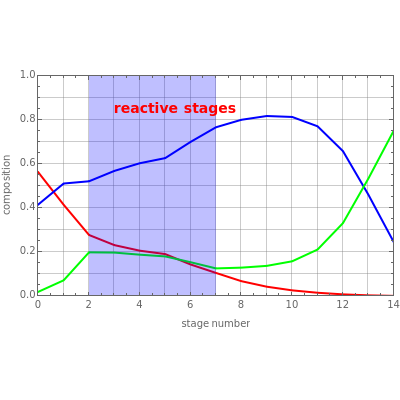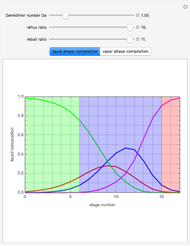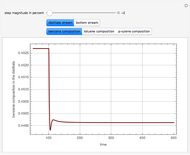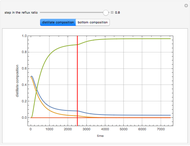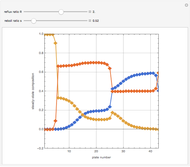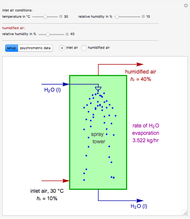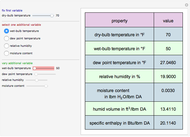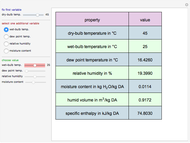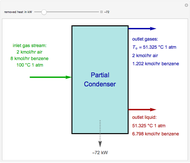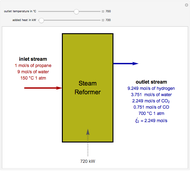Separation of a Reactive Ternary Mixture with a Distillation Column

Requires a Wolfram Notebook System
Interact on desktop, mobile and cloud with the free Wolfram Player or other Wolfram Language products.
Consider a ternary mixture of components  ,
,  , and
, and  with relative volatilities
with relative volatilities  and
and  . This mixture is subject to an equilibrium-limited chemical reaction
. This mixture is subject to an equilibrium-limited chemical reaction  with reaction rate
with reaction rate  , where the equilibrium constant
, where the equilibrium constant  . This mixture is fed to a reactive distillation column such that the total number of plates is equal to 14, the feed stage location is stage number 5, the reactive stages are from stage 2 to stage 7, and the feed composition is equimolar in
. This mixture is fed to a reactive distillation column such that the total number of plates is equal to 14, the feed stage location is stage number 5, the reactive stages are from stage 2 to stage 7, and the feed composition is equimolar in  and
and  (i.e., the feed is composed of 40% mole
(i.e., the feed is composed of 40% mole  , 40% mole
, 40% mole  , and 20% mole
, and 20% mole  ). The feed flow rate is chosen equal to 100 kmol/hr. For simplicity, the constant molal overflow (CMO) assumption is made and heat effects are neglected.
). The feed flow rate is chosen equal to 100 kmol/hr. For simplicity, the constant molal overflow (CMO) assumption is made and heat effects are neglected.
Contributed by: Housam Binous, Manel Selmi, Ines Wada, and Ahmed Bellagi (March 2011)
Open content licensed under CC BY-NC-SA
Snapshots
Details
For more information, see
M. F. Doherty and M. F. Malone, Conceptual Design of Distillation Systems, New York: McGraw–Hill, 2001.
Permanent Citation
